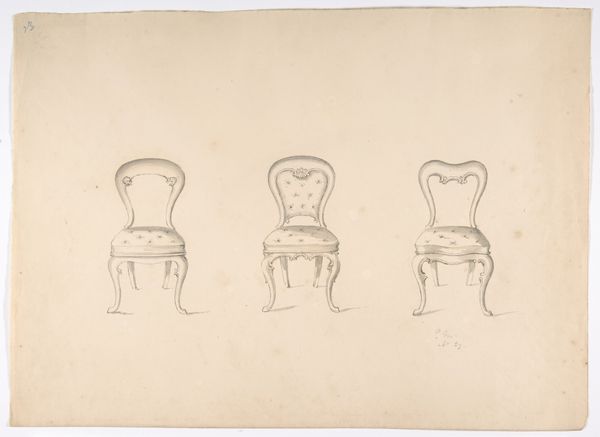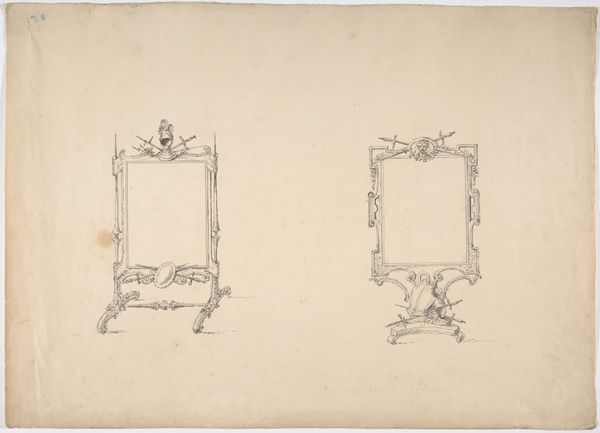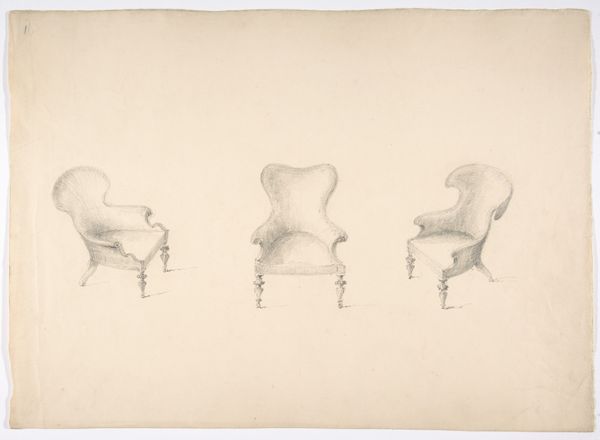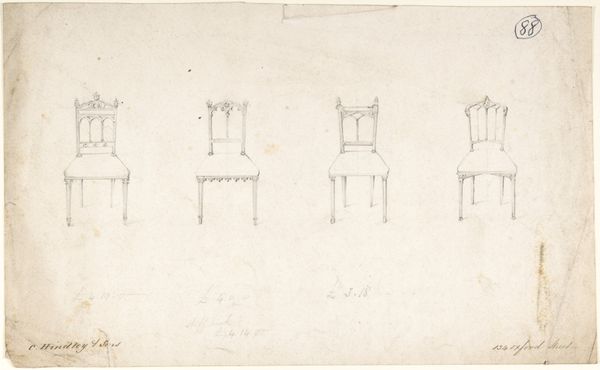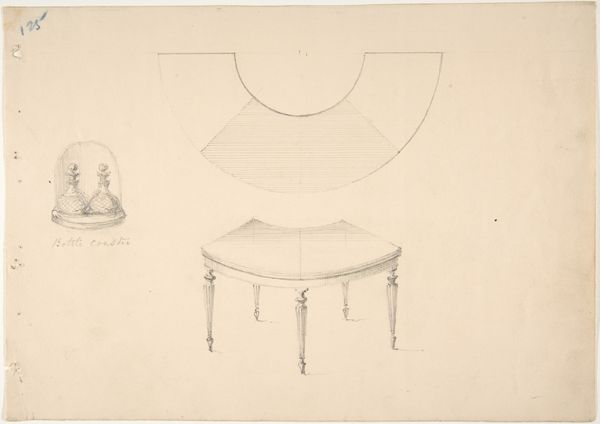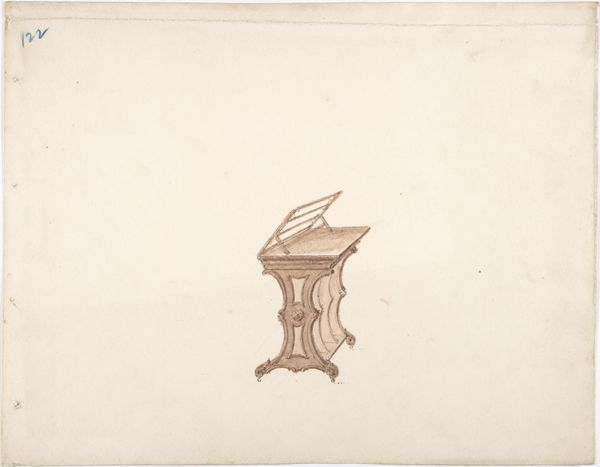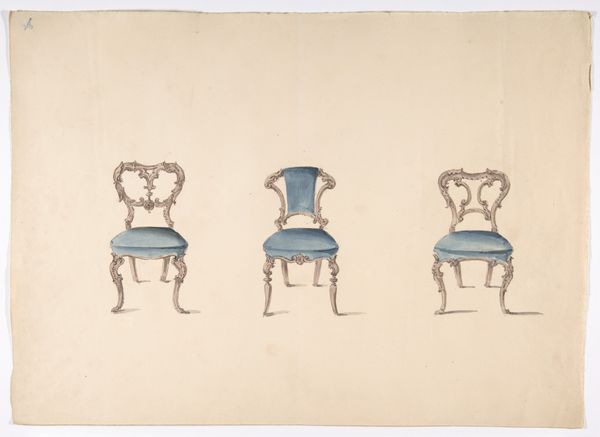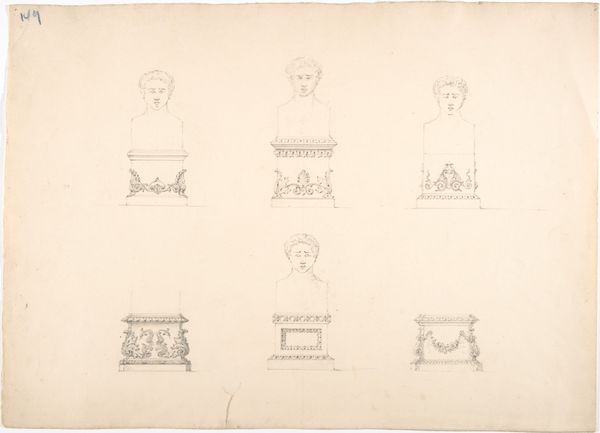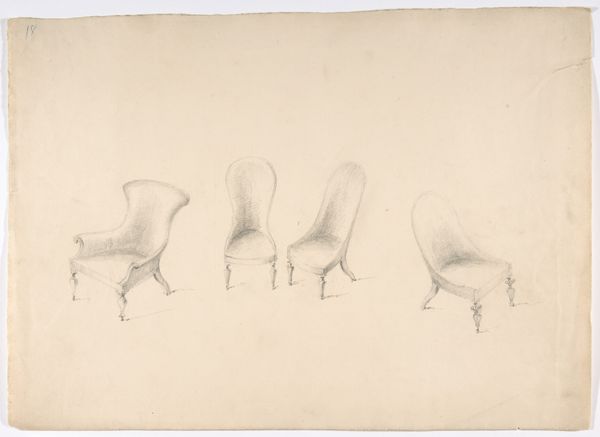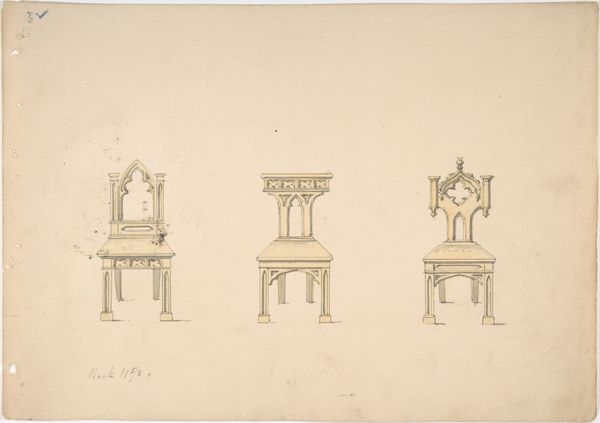
Design for Three Chairs, Two with Armorial Ornament on Backs 1800 - 1850
0:00
0:00
drawing, print, paper, pencil
#
drawing
# print
#
pencil sketch
#
paper
#
pencil
#
academic-art
Dimensions: sheet: 10 13/16 x 14 15/16 in. (27.4 x 38 cm)
Copyright: Public Domain
Curator: Welcome. Today, we are observing an intriguing drawing housed here at the Metropolitan Museum of Art in New York, a "Design for Three Chairs, Two with Armorial Ornament on Backs." The artist is anonymous, but the piece dates to somewhere between 1800 and 1850, rendered in pencil, a quick print, and touches of grey wash on paper. Editor: Well, I find it kind of charmingly underwhelming, almost apologetic. It's so pale, the chairs sketched like hesitant thoughts. But the repetition is hypnotic, almost ceremonial in its stark simplicity. What catches your eye, though, beyond my fleeting melancholy? Curator: The chair in visual culture carries quite a load of meaning! A chair offers a place, a pause, and of course, the symbols emblazoned upon the chairs hint at social rank and lineage. Heraldry offered visual shorthand for power and tradition. Each subtle flourish speaks volumes about the sitter, the owner, and the social order of things. The designer clearly put a lot of weight into this piece. Editor: I'd assumed it's a preliminary sketch for furniture makers. Practical, yes? Maybe even dashed off with no expectation of grand symbolism. But now, those armorial decorations... suddenly they read like personal banners, declaring, "I have arrived—and I require stylish posterior support!" Curator: Precisely! Such ornamentation creates an aura, conferring importance. Symbols can elevate an object, or in this case, an occupant, imbuing them with inherited significance, real or imagined. Notice, though, how the central chair lacks this device. Does it denote something else—perhaps humility, perhaps simply an everyman’s place? Editor: Now that's compelling, the ghost in the royal court, the humble center flanked by puffery. The eye naturally darts between these assertions of self and a stark simplicity in the middle. This piece really brings that question to mind, isn’t it: does an object need to assert, or can it simply *be*? Curator: Indeed, and visual culture is richer for asking it again and again. Editor: On that note, let’s leave our listeners to ponder those visual echoes.
Comments
No comments
Be the first to comment and join the conversation on the ultimate creative platform.

